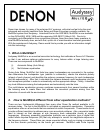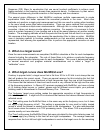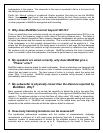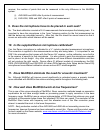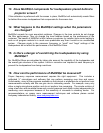
Denon has chosen, for many of its acclaimed A/V receivers, with what we feel to be the most
advanced and sonically beneficial Auto Setup and Room Eq system currently available, the
MultEQxt system from Audyssey. Introduced first on the AVR-5805, MultEQxt is now available
on the AVRs-4806, 4306, 3806 and the upcoming AVR-2807CI (March ’06). Due to its
complexity and differentiation from competitors systems, there have been many questions to
what MultEQxt actually does, and with that, quite a lot of misinformation has been generated.
With the assistance of Audyssey, Denon would like to provide you with an informative insight
into this technology.
1. What is MultEQxt?
Audyssey MultEQxt is an acoustical correction technology that calibrates a Denon A/V Receiver
so that it can achieve optimum performance for every listener within a large listening area.
There are two components to MultEQxt:
(i) Automatic Setup (Auto Setup)
(ii) Multi-listener equalization.
During Auto Setup, MultEQxt first finds how many loudspeakers are connected in the system,
then determines the loudspeaker type (satellite or subwoofer), checks the absolute polarity
(phase) of each channel, and identifies the optimum crossover frequency for each loudspeaker
and the subwoofer(s). After that it calculates the distance between each loudspeaker and the
first microphone position in order to automatically set the appropriate delays. Finally, it identifies
any level differences among the loudspeakers and automatically sets the trims.
The multi-listener equalization process combines measurements from several locations within
the listening area to create filters that address the acoustical problems arising from the
interaction of sound with the environment.
2. How is MultEQxt different from other equalization methods?
1
There are two fundamental differences from every other Room Eq method available in AV
receivers today. The first is that MultEQxt is not based on parametric equalization. Parametric
equalization relies on a few bands that are centered at certain frequencies. These bands do not
provide sufficient resolution to address many room acoustical problems. Also, parametric bands
tend to interact so that changes at one frequency have undesirable results at nearby
frequencies. Moreover, parametric equalization methods use a particular type of digital filter
called Infinite Impulse Response (IIR) that only attempts to correct the magnitude response in
the frequency domain. These filters can cause unwanted effects, such as ringing or smearing,
in the time domain particularly as the bands get narrower. MultEQxt uses Finite Impulse



